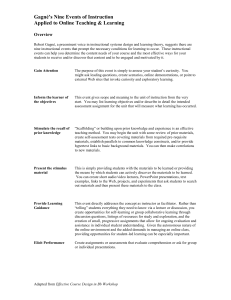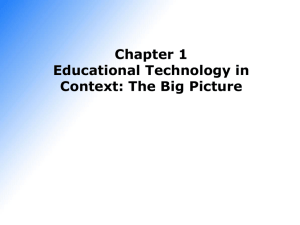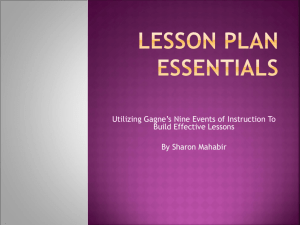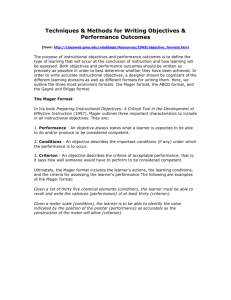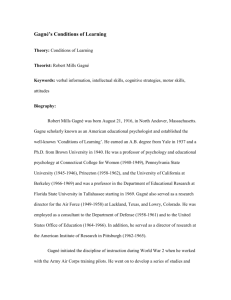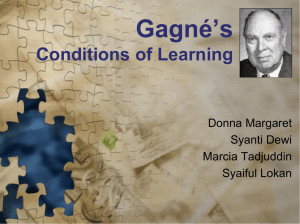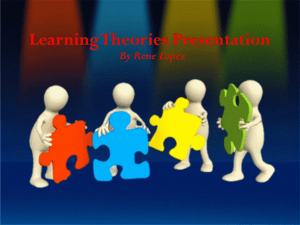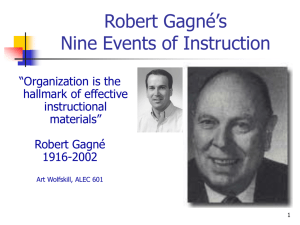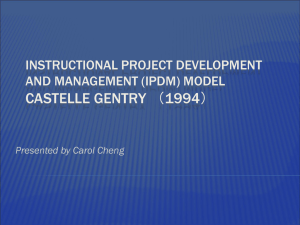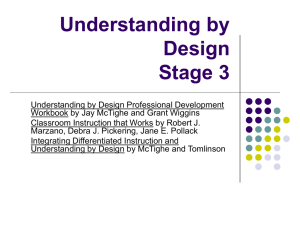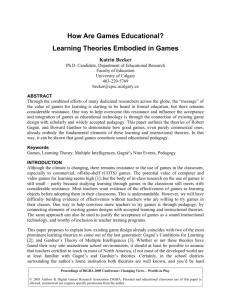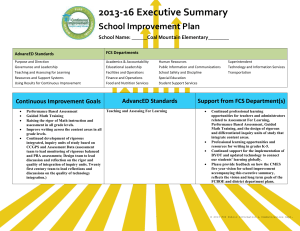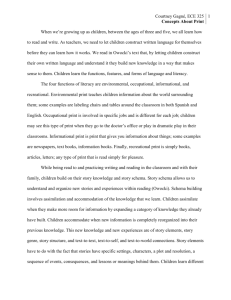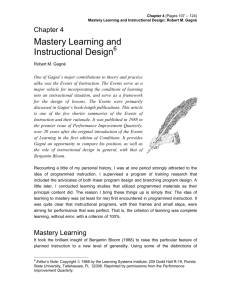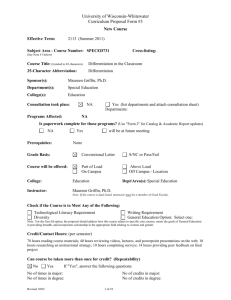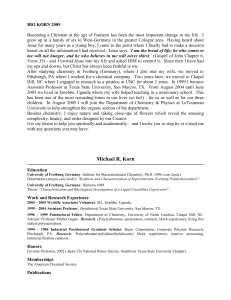Gagné Instructional Events
advertisement
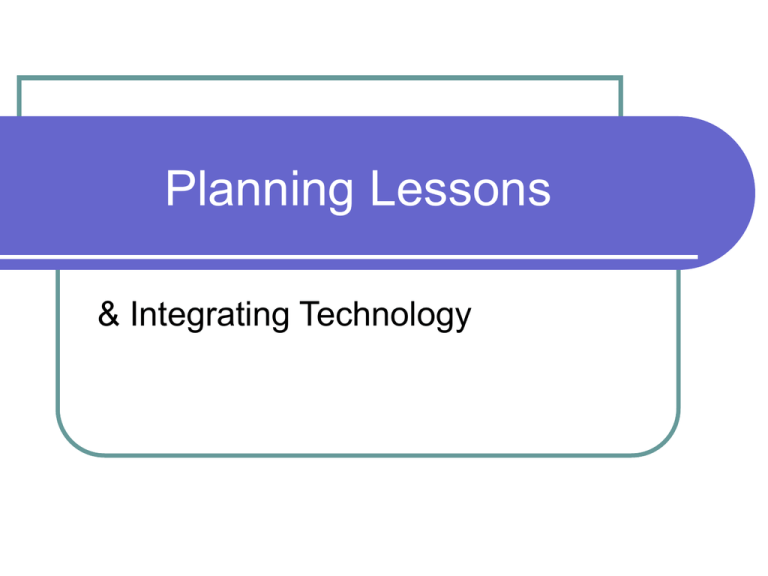
Planning Lessons & Integrating Technology Teaching Methods Constructivist/Inquiry-based Students learn via interaction with their environment Bruner, Dewey, Piaget, Vygotsky, Kant Associated with Cognitive Theory Problem based learning Real world problem posed to students Students must solve problem as means of learning content & applying to real life Student centered What students know vs. what they need to know to solve problem Group work is common Constructivist/Inquiry-based continued: Project based/Performance-based learning Scenario based learning Student centered/teacher facilitated Similar to PBL, but has a real-life context without a problem Explore complex issues that impact learners Not to be confused with “Maturationist” which permits little or no structure Epistemology: students construct meaning/knowledge Teaching Methods Direct Instruction Clearly defined teaching tasks Information presented in small chunks Mastery learning Teacher led/directed/”centered” Teacher dispenses information Associated with Behaviorist learning theory Gagné Instructional Events: 9 events of instruction Epistemology: knowledge already exists (objective) Differentiated Instruction “Attempts to meet students where they are in the learning process and move them along as quickly and as far as possible in the context of a mixed-ability classroom” (Tomlinson, 2000, p. 25). Technology Integration What type of technology will you integrate? Technology should add a dimension/benefit to the lesson that could not have been achieved as effectively without Will you need to teach the tech skills? Is the technology being used as a teacher demo, student user, or student designer? Do you have the necessary tech resources for students? Are students working individually or in groups? (Note: centers are commonly used in lower grades) Miscellaneous Approaches Thematic approach Multidisciplinary Multi-age (reading buddies, for example) Socratic Method Transaction Vs Transmission Lecture Group work Vs individual Class or small group discussion Cooperative/Collaborative learning Critical Lesson Plan Components Content area & specific topic Grade Level Duration (be specific) Standards being met Objectives/outcomes Procedures Assessment Technology integration identified Materials (preparation, supplies, room scheduling, etc.) Adaptations/Differentiated Instruction Introduction/scenario Gagné Instructional Events 1. Gain Attention: (reception) • 2. Inform Learner of Objectives: (expectancy) • 3. State in learners’ terminology Recall Prior Knowledge: (retrieval) • 4. Student becomes focused on content Prepares student for new material & helps them develop connection with new Present Material: (selective perception) • Method of presenting depends upon instructor Note: All 9 steps may be carried out in a 50 minute lesson. Alternatively, steps 8 & 9 may be performed at a different time. In a 3 day lesson you may go through the first 7 steps on day 1, steps 1-3 & 6 day 2, and steps 1-3 & 8-9 on day 3. The steps are transitive & support one another. It is good practice to cover the first 3 steps in any teaching situation (if students are working on a project after step 3, for instance) Gagné Instructional Events 5. Provide Learning Guidance: (semantic encoding) • 6. Elicit Performance: (responding) • • 7. Make sure students are on-track with performance, provide input Assess Performance: (retrieval) • 9. Student practice Check on learning Provide Feedback: (reinforcement) • 8. Answer questions, fill-in the gaps, re-explain if necessary, examples What did student learn? May be informal verbal assessment/check on learning, or more complex quiz, exam, project, or presentation Enhance Retention Transfer: (generalization) • Homework, worksheet, extra problems, integrate with previous knowledge and/or other concepts. Note: steps 3 & 8 also help with step 9 Note: All 9 steps may be carried out in a 50 minute lesson. Alternatively, steps 8 & 9 may be performed at a different time. In a 3 day lesson you may go through the first 7 steps on day 1, steps 1-3 & 6 day 2, and steps 1-3 & 8-9 on day 3. The steps are transitive & support one another. It is good practice to cover the first 3 steps in any teaching situation (if students are working on a project after step 3, for instance) Sample 2-3 Day Technology Integration Lesson Plan Template Subject Topic Duration Grade Level Academic Content Standards Introduction/Background/Scenario Objectives Procedures Gagné 9 instructional events Develop each day Evaluation OH Content Stds. OH Technology Stds. NETS*T Information Literacy Standards Rubric Materials *Provide sample materials or good examples of items that will be used in conjunction with your lesson plan (technology products, quizzes, exams, handouts, worksheets, links to online support data, rubrics, etc.) *Cite all sources & provide references where appropriate Technology Integration 3 ways to integrate technology A demonstration tool used by the teacher Student as user of technology Examples: PowerPoint, projected graphs, online tutorial demos, etc. Examples: student uses CD-Rom tutorial, online simulation, goes through your non-linear PPT module, etc. Student as creator of technology products Example: Student researches ancient Egypt and creates a non-linear PPT kiosk with the information he/she researched References Tomlinson, C.A. (2000). Differentiated instruction: Can it work? Education Digest, 65(5), 25-31.
